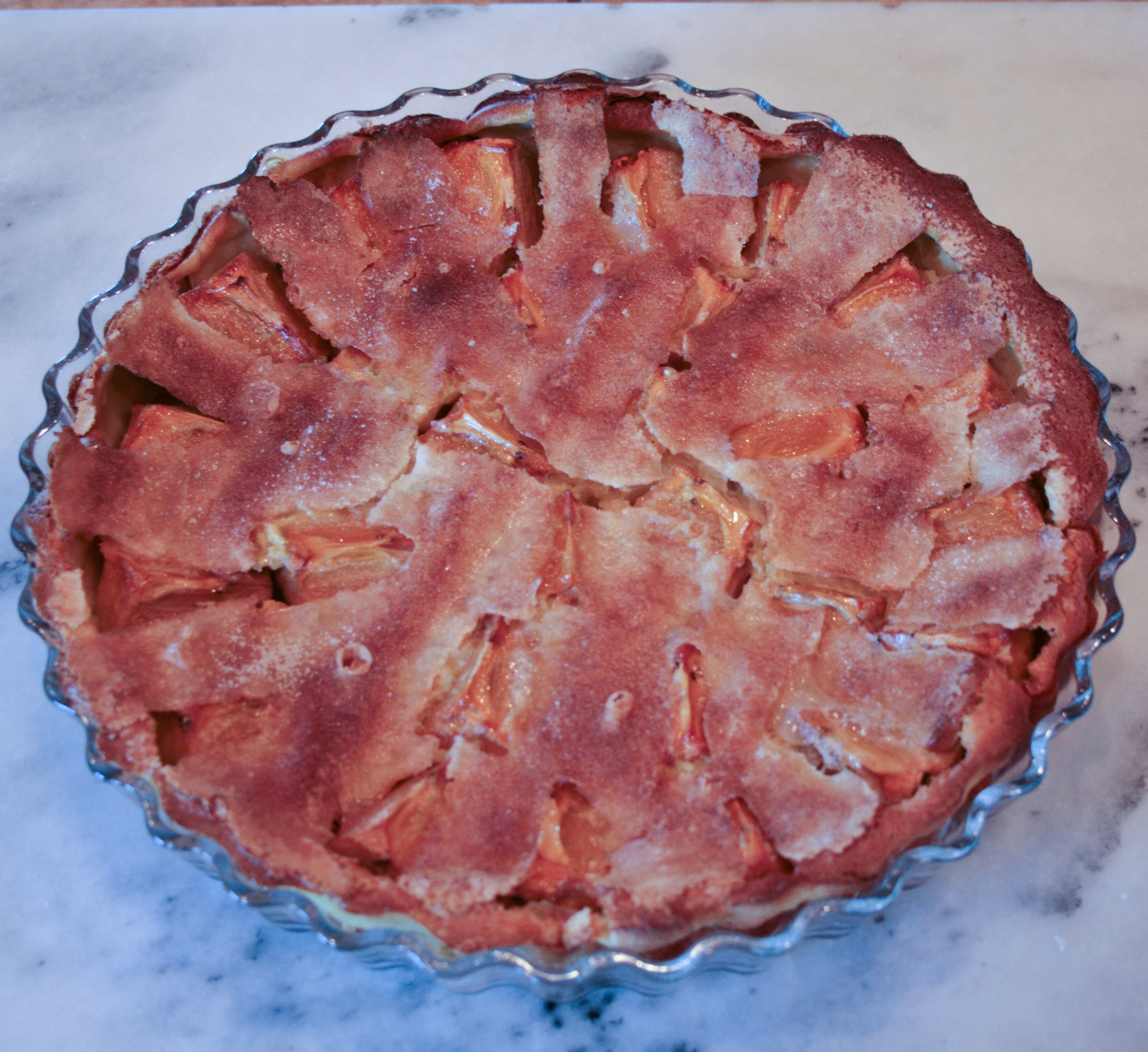Winter in the Northwest means persimmons and persimmon clafouti
In the Northwest, one of the signs of winter, besides the gathering gray rain-laden clouds, is that persimmons start showing up at the grocery store.
Personally, I think these wonderful fruit are under-appreciated . In Asia they’re considered a delicacy and it’s something that we look forward to in our household every winter.
Persimmons are grown in Oregon as well as California. There are two general varieties of persimmons—those that are astringent until fully ripe and those that are not astringent. The astringent varieties are generally rounder and aren’t sweet until they’re completely soft. The non-astringent varieties are flatter, apple-crisp and sweet while maturing. The non-astringent varieties are the ones our family prefers. They’ll also hold up to baking because they’ll retain their firmness even after baking . The California Rare Fruit Growers’ Web site has more information on persimmon trees and varieties you can plant if you want to grow your own.
Besides peeling them and enjoying them raw, one of the ways you can enjoy persimmons is to use them in a clafouti.
Clafoutis are easy to make and can be made with a variety of fruit, including cherries and pears. You can enjoy clafouti with ice cream or a dollop of whipped cream. To take it over the top, pour yourself a nice ice wine-style wine. The sweetness of ice wine and its bright acidity will pair nicely with the clafouti. Some excellent ice wines from Oregon include Adelsheim Pinot Noir De Glace, King Estate Vin Glacé and Argyle Minus Five.
Ice wines are traditionally made in Germany using grapes that are left on the vine to freeze and then they’re crushed. The juice is concentrated because the water in the grapes is frozen. In Oregon, it doesn’t get cold enough so wine makers give nature a hand by freezing the grapes after they’re picked.
Persimmon Clafouti
- 5-6 persimmons, peeled, and cut into quarters
- 1 3/4 cups (420 ml.) milk
- 1/3 cup (80 ml.) granulated sugar
- 3 eggs
- 1 tablespoon (15 ml.) vanilla extract
- 1/8 teaspoon (.6 ml.) salt
- 2/3 cups (160 ml.) sifted all-purpose flour
- Preheat oven to 350 degrees (190C or Gas Mark 5). In a blender combine the milk, sugar, eggs, vanilla, salt and flour and blend at the highest setting for about 1 minute.
- Lightly butter a 7- to 8-cup (1.5- to 2-liter) baking dish or pie plate about 1 1/2 inches (4 cm.) deep.
- Pour a 1/4 inch (1/2 cm.) layer of batter in the baking dish or pie plate and put it in the oven for two to three minutes until the batter sets in the bottom of the dish.
- Remove from oven. Arrange persimmon wedges in a circular wagon-wheel pattern.
- Sprinkle another 1/3 cup (80 ml.) of sugar over the persimmons and then pour the remainder of the batter over the fruit. Place the pie plate in the middle of the oven rack and bake for about an hour. The clafouti is done when it has puffed up and browned on the top.
- To test, stick a toothpick in the center of the cake and remove. If it comes out clean, without any batter clinging to it, the clafouti’s done. You can serve the clafouti warm or at room temperature. As the clafouti cools, the cake will sink slightly. My favorite way of serving clafouti is with a scoop of vanilla ice cream.
Adapted from Mastering the Art of French Cooking by Julia Child
— Vic
























It was delicious! Thank you for sharing.